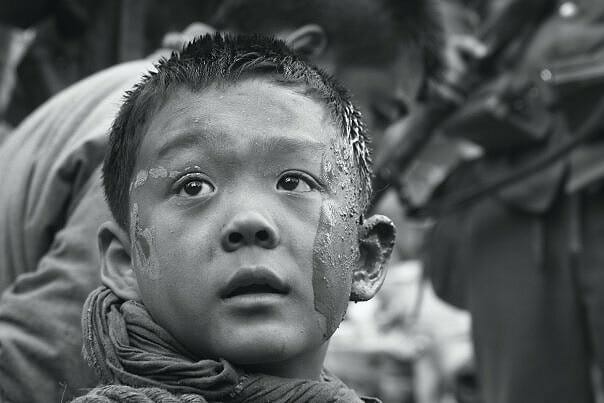
Director: Chuan Lu
Writer: Chuan Lu
Cinematographer: Yu Cao
Stars: Ye Liu, Yuanyuan Gao, Hideo Nakaizumi
Studio/Running Time: Kino International, 133 min.
City of Life and Death begins with the most direct translation to film a video game has ever had. This 30-minute-long war scene jumps about a largely context free battlefield in which men are risking their lives and being killed at random. The precision of the area’s props and sets is so amazing that it looks far more like Call of Duty than it does other films, and as the battle rages on its source material becomes even more obvious. It’s a tribute to Lu Chuan’s skill that it captures the feeling of these games so well. The only problem is that this is a movie about the bleakest events in the eastern half of World War II.
After this numbing beginning, City of Life and Death draws primary inspiration from Steven Spielberg’s two great war films Schindler’s List and Saving Private Ryan in a way that makes them impossible to miss. The film’s focus shifts to post-war and what we’re in for is an attempt to make the horrors of the Rape of Nanking live on-screen. But while Spielberg shies away from torture and rape, City of Life and Death exalts in it. Perhaps the best film made about the Holocaust remains Night and Fog, Alain Resnais’ respectful and meditative work on the loss of life. The gap that exists between that and City of Life and Death could not be larger, one film filled with anguish and the other with anger.
The tiny bit of a story that does exist in City of Life and Death primarily concerns the aide of a sympathetic Nazi who helped set up the Safety Zone that protected some Chinese citizens after Nanking was taken. We watch as he tries his damnedest to protect his friends and family until eventually his boss is kicked out because he may be threatening the relationship between these two nations. On the other side, we see through the soldier Kadokawa’s point of view a growing self-hatred about the actions of the Japanese army.
It was this soldier’s point of view that actually caused a scandal in China, with protesters angry at the very idea of showing an even somewhat sympathetic Japanese person during Nanking. But Kadokawa is not a person, he’s a carefully callibrated device to give us an easy point of view for more violence. Like every other element he was carefully storyboarded and shot to precision in order to maximize the total horror in picture, and this manipulation is all too obvious. It’s a history-as-propaganda film, which would be merely annoying if it weren’t for the disrespect this offers to the hundreds of thousands who died.
Chuan is obviously talented, and it’s easy to become entranced in his aestheticized violence because of its polish. He knows how to shape both shots and entire scenes. But we’re supposed to react viscerally to the film instead of intellectually, and considering the content, that’s extremely problematic. The choice to shoot the picture in black and white makes this issue obvious; it’s an attempt to turn this violence into an art object that can be appreciated, while anesthetizing the violence by removing flesh and blood. Were things shot in color, the film would be practically unwatchable, but that’s really as it should be. Chuan’s attempt is certainly admirable in the time and care put towards honoring those at Nanking, but the effort is misguided and its propagandist take feels hollow and disappointing.